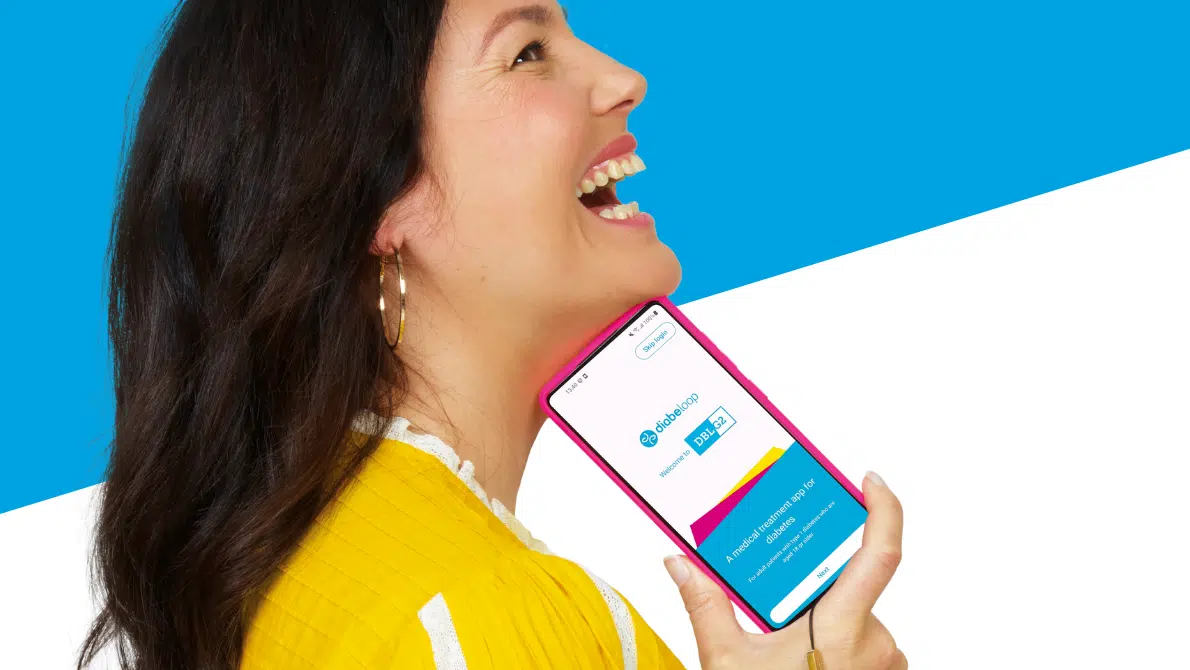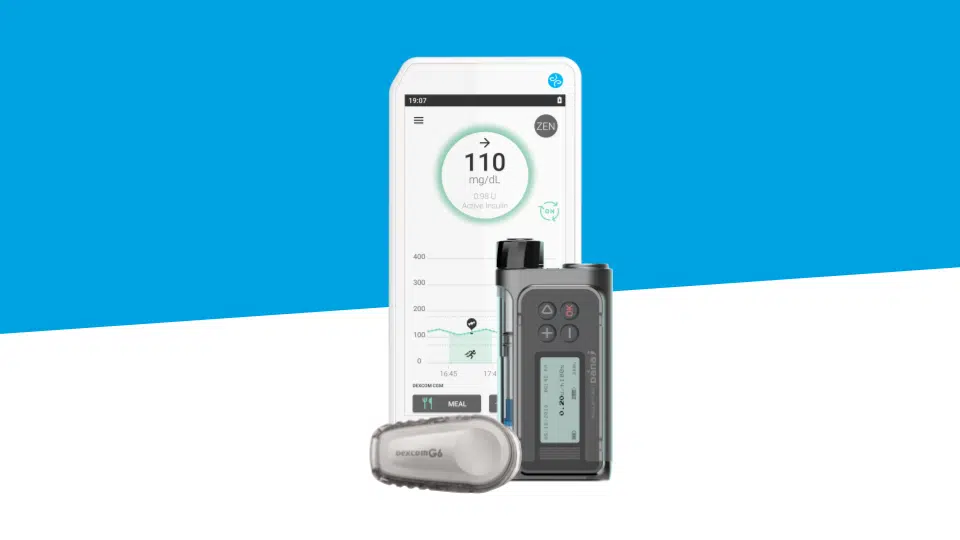
The psychological impact of Type 1 diabetes: burnout, distress, depression, exhaustion, etc.
Can you picture the image of the candle burning until it goes out? This is called a “burnout”. Nowadays, this common word is used in the professional or medical world to describe physical, mental and emotional exhaustion, bordering on what could be an underlying depressive illness.
Diabetes burnout is described as a feeling of exhaustion and frustration related to the daily demands of managing the disease, which can sometimes lead to inconsistent self-management behaviors. The term “burnout”, which is synonymous with diabetes distress, is most often used to describe this.
1 | Daily diabetes management: Potential difficulties
An international program has analyzed the psychosocial impact of diabetes in people with this disease. The purpose was mainly to assess the psychological, social and behavioral barriers that hinder the day-to-day management of the disease.
In short, here are the lessons we can learn from their work:
- There is some distress related to diabetes itself (distress when the disease is diagnosed, difficulties in daily and social life, poor well-being, psychological problems, lack of follow-up and psychological care);
- There patient-carer relationship is good, but there appears to be a lack of knowledge among professionals about the psychological consequences of diabetes (69.8%), and about the various ethnic cultures of the people being cared for;
- The relationship with the healthcare system is poor, because the healthcare professionals (family doctors, specialists, psychologists) are not very accessible;
- There are obstacles to daily treatment (treatment too complicated, fatigue due to daily treatment routine)1.
2 | When faced with type 1 diabetes, can we talk about psychosocial distress?
For some people, living with diabetes can be difficult. Healthcare professionals have looked at the emotional distress associated with type 1 diabetes (“feeling overwhelmed”, “feeling like a failure”) and have developed a tool to measure this: the Diabetes Distress Scale (DDS 17).
Healthcare providers use this to analyze the distress of people living with diabetes:
- On an emotional level (“Diabetes takes up some of my mental and physical energy. I feel angry, scared or depressed. Diabetes is taking over my life. I’m scared of the complications. I feel overwhelmed”);
- Relations with healthcare professionals (“My doctor doesn’t know enough about diabetes, doesn’t give me clear enough instructions, doesn’t take my worries seriously, and doesn’t see me regularly enough”);
- The impact on lifestyle (“I don’t check my blood sugar levels often enough. I have problems managing it. I lack confidence in how I manage it. I deviate from the required diet. I lack motivation”);
- Interpersonal consequences (“My friends and family don’t support me. They don’t understand how difficult life with diabetes is. I don’t have the emotional support I would like to get”).
Depending on the score, healthcare professionals assess the level of distress, and judge whether any particular aspects of the stress uncovered by the questionnaire may require special clinical attention. The answers provided may also provide an opportunity for a discussion with those living with diabetes2.
Read also: Recognizing and Overcoming Diabetes Burnout and Distress
A survey looked at sources of diabetes distress or burnout in adults with type 1 diabetes; 41.6% reported at least moderate distress. The people surveyed mentioned the following sources of distress:
- Feeling of helplessness;
- Negative social perceptions;
- Distress: linked to healthcare professionals, friends/family; faced with hypoglycemia, daily management, food, etc.
The report found higher levels of distress among women with complications, poor blood sugar management, who were younger in age, and had no partner3.
Another survey sought to identify the frequency of depression and diabetes distress in a population of 368 adults living with type 1 diabetes using a self-assessment questionnaire (PHQ-8) and semi-structured interviews.
These interviews, which follow a specific methodology, are used to make psychiatric diagnoses according to the criteria set out in the reference manual (DSM for Diagnostic and Statistical Manual of Mental Disorders). These interviews were used as a baseline to quantify the extent of the depressive disorders among those participating in the survey.
According to the self-assessment questionnaire (PHQ-8), the frequency of diabetes distress is 42.1% and that of depression ranges from 3.8% to 11.4% However, according to the structured interviews, only 3.5% of people actually have a major depressive disorder. It was therefore concluded that what is identified in the self-assessment questionnaire as “depression” is actually more consistent with emotional distress associated with managing a demanding chronic illness, and the other stresses of life.4
3 | Some recommendations to better manage the situation
Using therapeutic education, healthcare professionals can help you to be active in managing your diabetes on a daily basis, i.e. self-management: food, physical activity, treatment, monitoring. As each person is different, a personalized care plan is established according to each person’s needs, resources, and psychological and social barriers.
Psychological monitoring may be considered, faced with the difficulties of living with diabetes, the restrictions imposed by the treatment, and the personal and social relationships. This helps to reduce the emotional and psychological burden in order to overcome obstacles and live better every day.
Good communication between a person living with diabetes and healthcare professionals is recommended, in collaboration with the patient associations, in order to express their needs clearly and receive support.
Awareness and information among people with diabetes is necessary to help them make truly well-informed choices about different diabetes management options, tailored to individual lifestyles.
Read also: Diabetes burnout changed Weronika’s life
4 | Diabetes burnout sometimes shows up online
The “digitosome” concept is being studied for medical research purposes. This term covers all the digital data produced by an individual (social networks, smartphones, smart objects). Writers have studied videos posted on the web with a title, description or content that specifically addresses diabetes burnout over a 10-year period (2007-2017).
Four main themes emerge:
- “Feeling mentally and physically exhausted from the pressures associated with the treatment”;
- “Self-detachment, and detachment from the care system and the support system.”
- “Sense of helplessness and paralysis, because of the inability to escape from this exhaustion.”
- “There are factors that contribute to this burnout (burden of self-management, lack of fulfillment in diabetes management, culture of perfectionism and fear around diabetes, lack of help, life events).”
Self-descriptions of diabetes burnout suggest that it is actually a combination of emotions and behaviors, ranging from exhaustion to detachment, accompanied by a sense of powerlessness5.
By analyzing these accounts, it was possible to define four profiles of individuals:
|
BIBLIOGRAPHY
- Soren E. Skovlund, Mark Peyrot, the DAWN International Advisory Panel. The Diabetes Attitudes, Wishes, and Needs (DAWN) Program: A New Approach to Improving Outcomes of Diabetes Care. Diabetes Spectrum 2005 Jul; 18(3): 136-142.
- Polonski, W.H., Fisher, L., Earles, J., Dudley, R.J., Lees, J., Mullan, J.T. & Jackson, R.A. (2005). Assessing psychological stress in diabetes. Diabetes Care. 28, 626 – 631.
- Fisher L, Polonsky WH, Hessler D. Understanding the sources of diabetes distress in adults with type 1 diabetes. J Diabetes Complications. May-Jun 2015;29(4):572-7.
- Fisher L, Hessler DM, Polonsky WH. Prevalence of depression in Type 1 diabetes and the problem of over-diagnosis. Diabet Med. 2016 Nov;33(11):1590-1597.
- S Abdoli, D Hessler, A Vora. Descriptions of diabetes burnout from individuals with Type 1 diabetes: an analysis of YouTube videos. Diabet Med.2020 Aug;37(8):1344-1351.
- Abdoli S, Hessler D, Vora A. Original Research: Experiences of Diabetes Burnout: A Qualitative Study Among People with Type 1 Diabetes.Am J Nurs. 2019 Dec;119(12):22-31.







